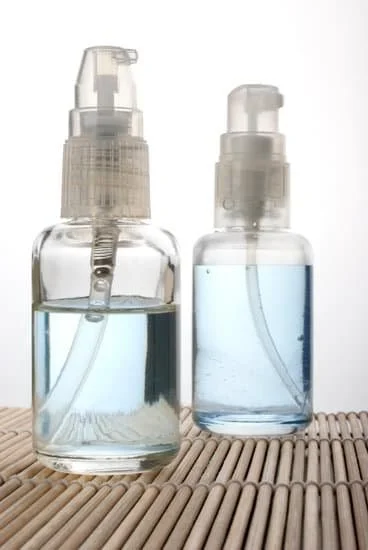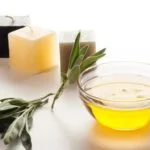Aromatherapy has gained immense popularity in recent years as people seek natural remedies to enhance physical and mental well-being. One essential oil that has captured the attention of many is peppermint aromatherapy oil. With its invigorating scent and therapeutic properties, peppermint oil has become a staple in the realm of holistic health. But what exactly is peppermint aromatherapy oil good for?
Peppermint, known scientifically as Mentha piperita, has a long history as a medicinal plant. It has been used for centuries in various cultures around the world for its cooling and soothing properties. The use of peppermint as an essential oil can be traced back to ancient Egypt and Greece, where it was highly revered for its aromatic qualities. Today, this versatile essential oil is widely used in aromatherapy practices for its wide range of benefits.
Peppermint aromatherapy oil is not only refreshing but holds numerous physical and mental health benefits. Research suggests that the active compounds found in peppermint oil, such as menthol and menthone, contribute to its therapeutic effects. It has been known to alleviate headaches, reduce muscle pain, improve digestion, and even provide relief from respiratory conditions.
Moreover, peppermint aromatherapy oil is believed to have profound effects on mental and emotional well-being. Its aroma can enhance concentration, alleviate stress and anxiety, boost mood, and promote mental clarity.
In this article, we will delve into the rich history of peppermint as an essential oil while exploring its chemical composition that makes it so potent. We will also examine the physical benefits it offers along with its impact on mental and emotional well-being.
Additionally, we will provide practical tips on how to incorporate peppermint aromatherapy oil into daily life while being mindful of precautions and potential side effects. So let’s embark on this aromatic journey together and discover what peppermint aromatherapy oil is truly good for.
History of Peppermint
Peppermint has a rich history that dates back thousands of years. Its origins can be traced to ancient civilizations such as Egypt, Greece, Rome, and China, where it was highly valued for its medicinal and therapeutic properties.
In ancient Egypt, peppermint was used for various purposes, including as a remedy for indigestion and as a natural insect repellent. The Greeks and Romans also recognized the power of peppermint and used it to flavor food and drinks, as well as to alleviate respiratory ailments.
One of the earliest recorded uses of peppermint is found in the Ebers Papyrus, an ancient Egyptian medical text from around 1550 BCE. This papyrus mentions peppermint being used to treat digestive issues such as nausea, stomachaches, and flatulence. It also describes peppermint being used for its cooling properties to relieve headaches and fevers.
In traditional Chinese medicine, peppermint has been used for centuries to soothe gastrointestinal issues, reduce pain and inflammation, and promote respiratory health. Peppermint oil was often added to herbal remedies and massage oils due to its refreshing aroma and soothing effects.
Throughout history, peppermint has had a variety of traditional uses across different cultures. It has been valued for its ability to alleviate digestive discomforts, cool the body during feverish conditions, relieve muscle pain through topical application or massages, clear congestion in respiratory passages, and improve overall physical well-being.
Understanding the historical uses of peppermint gives us insight into its longstanding reputation as a versatile essential oil with numerous applications in aromatherapy. This knowledge helps us appreciate the significance of this botanical extract that continues to benefit us today.
Chemical Composition
Peppermint oil is known for its therapeutic properties, which can be attributed to its unique chemical composition. This section will delve into the chemical components of peppermint oil and highlight the active ingredients that contribute to its various benefits.
One of the key constituents of peppermint oil is menthol, which gives it a cooling and soothing effect. Menthol has been found to possess analgesic properties, making it effective in relieving headaches and muscle pain. It also acts as a decongestant, helping to clear up respiratory passages and alleviate symptoms of respiratory conditions such as colds and sinus congestion.
Another important component of peppermint oil is menthone, which gives it a minty aroma. Menthone has been found to have antifungal and antibacterial properties, making it useful in treating skin conditions caused by fungal or bacterial infections. Additionally, this compound has been linked to improved digestion by promoting the flow of bile and enzymes in the digestive system.
Peppermint oil also contains menthyl acetate, a compound known for its relaxing effect on muscles and mind. This active ingredient contributes to the calming and stress-relieving properties of peppermint aromatherapy oil. Furthermore, peppermint oil contains a variety of other compounds such as cineole, limonene, and pulegone that further enhance its therapeutic qualities.
To summarize, the chemical composition of peppermint oil plays a significant role in its therapeutic properties. The active ingredients found in peppermint oil contribute to its effectiveness in relieving headaches, reducing muscle pain, improving digestion, and alleviating symptoms related to respiratory conditions. Understanding these chemical components helps us make an informed decision when considering what peppermint aromatherapy oil is good for.
| Chemical Component | Therapeutic Properties |
|---|---|
| Menthol | Relieves headaches and muscle pain, decongests respiratory passages |
| Menthone | Treats skin conditions, promotes digestion |
| Menthyl Acetate | Relaxes muscles and relieves stress |
| Cineole, Limonene, Pulegone | Contribute to overall therapeutic qualities of peppermint oil |
Physical Benefits
Peppermint aromatherapy oil offers a wide range of physical benefits that make it a valuable addition to any wellness routine. One of the most notable benefits is its ability to provide relief from headaches. Peppermint oil has analgesic and cooling properties that can help alleviate tension headaches and migraines. When applied topically or inhaled through aromatherapy, it can provide quick relief and promote relaxation.
In addition to its headache-relieving properties, peppermint oil also has impressive abilities to reduce muscle pain. The menthol content in peppermint oil acts as a natural muscle relaxant, making it an effective remedy for sore muscles, cramps, and muscle tension. Simply massaging diluted peppermint oil onto the affected area can help soothe and ease discomfort.
Peppermint aromatherapy oil is also renowned for its positive effects on digestion. It can help relieve symptoms of indigestion such as bloating, gas, and stomach discomfort. This is due to its ability to stimulate the flow of bile in the digestive system and relax the muscles in the gastrointestinal tract. Peppermint oil can also be helpful for individuals with irritable bowel syndrome (IBS), as studies have shown that it can reduce symptoms such as abdominal pain and bloating.
Furthermore, peppermint oil is beneficial for reducing symptoms of respiratory conditions such as colds, coughs, sinus congestion, and allergies. Its expectorant properties help to loosen mucus in the respiratory tract and facilitate easier breathing. Inhaling peppermint vapors or applying diluted oil topically on the chest or throat area can alleviate congestion and bring relief.
Peppermint aromatherapy oil truly provides a variety of physical benefits that cater to different areas of health and well-being. Its versatility makes it a must-have in any essential oil collection, and its natural properties make it a preferred choice for those seeking alternative remedies for common ailments.
| Physical Benefit | Description |
|---|---|
| Relieves Headaches | The analgesic and cooling properties of peppermint oil provide relief from tension headaches and migraines. |
| Reduces Muscle Pain | Menthol content in peppermint oil acts as a natural muscle relaxant, helping alleviate sore muscles, cramps, and tension. |
| Improves Digestion | Stimulates bile flow and relaxes gastrointestinal muscles, providing relief from indigestion, bloating, and gas. |
| Reduces Respiratory Symptoms | Expectorant properties of peppermint oil help loosen mucus in the respiratory tract, easing congestion and facilitating easier breathing. |
Mental and Emotional Benefits
Enhanced Concentration
Peppermint aromatherapy oil has been found to have a powerful impact on concentration and cognitive function. The inhalation of the oil’s aroma stimulates the brain, increasing alertness and focus.
Research has shown that the scent of peppermint can improve memory retention and enhance mental clarity, making it an excellent choice for those needing to stay sharp and focused throughout the day. Whether you are studying for an exam or working on a complex project, incorporating peppermint aromatherapy oil into your environment can help boost your productivity and overall cognitive performance.
Stress and Anxiety Relief
In today’s fast-paced world, chronic stress and anxiety have become prevalent issues for many individuals. Peppermint aromatherapy oil offers powerful calming effects that can alleviate stress and anxiety symptoms. When inhaled, the soothing aroma of peppermint triggers the release of endorphins, also known as “feel-good” hormones.
These endorphins help lower stress levels, promote relaxation, and create a sense of calmness. Furthermore, peppermint oil has been found to reduce cortisol levels in the body, which is known as the “stress hormone.” By incorporating peppermint aromatherapy oil into your self-care routine or daily activities, you can experience significant relief from stress and anxiety.
Mood Enhancement
Peppermint aromatherapy oil is renowned for its ability to uplift mood and improve overall emotional well-being. The refreshing scent of peppermint stimulates receptors in the brain linked to uplifting emotions, such as happiness and relaxation.
In addition to its aromatic benefits, studies have shown that inhaling peppermint essential oil may increase serotonin levels in the brain-a neurotransmitter responsible for regulating mood-and reduce feelings of depression. Incorporating peppermint aromatherapy oil into your daily routine can provide you with a natural mood boost while promoting a positive outlook on life.
These mental and emotional benefits make peppermint aromatherapy oil a valuable tool for individuals seeking ways to improve their focus, combat stress and anxiety, and enhance their overall well-being. Whether used during meditation or incorporated into daily activities, the versatility of peppermint oil allows individuals to experience its transformative effects in various aspects of life, ultimately leading to better mental health and emotional balance.
Practical Applications
Diffusers
One of the most common and convenient ways to incorporate peppermint aromatherapy oil into daily life is through the use of diffusers. Diffusers are devices that disperse essential oils into the air, allowing their scent and therapeutic properties to fill the room.
To enjoy the benefits of peppermint aromatherapy oil, simply add a few drops of the oil to a diffuser along with water, and let it diffuse throughout your home or workspace. Not only will it create a pleasant aroma, but it can also help to improve concentration, boost mood, and provide mental clarity.
Massage Oils
Peppermint aromatherapy oil can also be used in massage oils to promote relaxation and alleviate muscle pain. When mixed with carrier oils such as coconut or jojoba oil, it can create a soothing blend that can be massaged into sore muscles or applied topically for tension relief.
The cooling sensation of peppermint oil can help to reduce inflammation, ease muscle spasms, and provide relief from headaches. For a refreshing massage experience, combine a few drops of peppermint essential oil with your preferred carrier oil and gently rub it onto the affected area.
Bath Products
Adding peppermint aromatherapy oil to bath products can elevate your bathing experience and provide physical and mental benefits. You can create your own homemade bath salts or bombs by combining Epsom salt or baking soda with peppermint essential oil. This combination can soothe tired muscles, relieve stress, and rejuvenate your mind. Alternatively, you can simply add a few drops of peppermint essential oil directly into your bathwater for an invigorating soak that will leave you feeling refreshed and energized.
Natural Bug Repellent
In addition to its therapeutic properties, peppermint aromatherapy oil also has insect-repellent qualities, making it a natural alternative to chemical-laden bug sprays. The strong scent of peppermint acts as a deterrent for mosquitoes, ants, spiders, and other unwanted pests.
To create your own natural bug repellent, mix a few drops of peppermint oil with water in a spray bottle and apply it to exposed skin or areas where insects are known to gather. Not only will it keep bugs at bay, but also leave you smelling fresh and minty.
By incorporating peppermint aromatherapy oil into diffusers, massage oils, bath products, or using it as a natural bug repellent, individuals can experience the wide range of physical and mental benefits that this essential oil offers. Experimenting with different applications can help you discover the methods that work best for you and enhance your overall well-being in various aspects of daily life.
However, before diving into practical applications of peppermint aromatherapy oil, it is essential to understand certain precautions and potential side effects that should be considered to ensure safe usage.
Usage Precautions
Peppermint aromatherapy oil is generally safe for use when used properly, but it’s important to take certain precautions to ensure its safe and effective use. Here are some usage precautions to keep in mind:
- Dilution: Peppermint essential oil is highly concentrated, and using it undiluted on the skin can cause irritation or sensitization in some individuals. It is recommended to always dilute peppermint oil with a carrier oil, such as coconut oil or almond oil, before applying it topically. A general guideline is to use 3-5 drops of essential oil per tablespoon of carrier oil.
- Sensitivity: Individuals with sensitive skin may experience adverse reactions when using peppermint aromatherapy oil. Before applying it to a larger area of the body, perform a patch test by applying a small amount of diluted peppermint oil on the inner forearm and waiting for 24 hours to check for any signs of irritation or allergic reactions.
- Pregnancy and Children: Peppermint essential oil should be used with caution during pregnancy as it can stimulate menstruation and potentially cause complications. It’s best to consult with a healthcare professional before using peppermint aromatherapy oil during pregnancy or breastfeeding. Additionally, peppermint oil should be kept out of reach of children under the age of 6 years old due to its high menthol content, which can cause breathing difficulties in young children.
- Possible Drug Interactions: Peppermint aromatherapy oil may interact with certain medications or medical conditions. Individuals taking medications like antacids, anticoagulants, or medications for gallstones or liver disease should consult their healthcare provider before using peppermint essential oil internally.
When it comes to dosage recommendations, there isn’t a one-size-fits-all approach as each individual may have different needs and sensitivities. It’s always best to start with small amounts and gradually increase if needed while monitoring how your body responds.
DIY Recipes
Peppermint aromatherapy oil offers a wide range of benefits, and incorporating it into DIY recipes can be a fun and practical way to experience its healing properties. Here are a couple of simple yet effective recipes that readers can easily try at home:
1. Homemade Headache Relief Blend:
– Ingredients:
- 10 drops of peppermint essential oil.
- 10 drops of lavender essential oil.
- Carrier oil (such as jojoba, almond, or coconut oil).
– Directions:
- In a small glass bottle, combine the peppermint and lavender essential oils.
- Add enough carrier oil to fill the rest of the bottle.
- Close the bottle tightly and shake well to blend all the ingredients together.
- Apply a small amount of this headache relief blend to your temples, forehead, and back of the neck whenever you experience a headache or tension.
The cooling properties of peppermint combined with the calming effects of lavender make this blend particularly effective for easing headaches and promoting relaxation.
2. Refreshing Room Spray:
– Ingredients:
- 15 drops of peppermint essential oil.
- 10 drops of lemon essential oil.
- Distilled water.
- Spray bottle.
– Directions:
- Fill a spray bottle with distilled water, leaving some space at the top.
- Add the peppermint and lemon essential oils to the water.
- Close the spray bottle tightly and shake well to mix all the ingredients thoroughly.
- Use this refreshing room spray throughout your home for an invigorating scent that can help uplift moods and provide an energizing atmosphere.
This room spray combines the minty freshness of peppermint with the citrusy aroma of lemon, creating a revitalizing fragrance that can enhance focus and create a positive ambiance in any space.
Remember, it’s important to use high-quality essential oils when making these DIY recipes to ensure the best results. Additionally, always perform a patch test before applying any new blend directly onto your skin and follow proper dilution guidelines.
By experimenting with these easy-to-make recipes, readers can explore the versatility of peppermint aromatherapy oil and discover its remarkable benefits firsthand. Whether it’s soothing headaches or freshening up their living space, incorporating peppermint oil into their daily lives can promote overall well-being and improve their mood.
Where to Buy
When it comes to choosing essential oils for aromatherapy, it is crucial to select high-quality products from reputable sources. This ensures that you are getting the most effective and safe peppermint aromatherapy oil to experience its full benefits. There are several options available for purchasing peppermint oil, both online and in physical stores.
One reliable source for buying peppermint aromatherapy oil is natural health stores and wellness centers. These establishments often carry a wide range of essential oils, including peppermint oil, from trusted brands. Visiting a local store allows you to smell different variations and ask questions before making your purchase. Additionally, the staff can guide you towards the best option based on your specific needs or concerns.
Online retailers specializing in aromatherapy products are also excellent sources for purchasing high-quality peppermint oil. Websites dedicated to essential oils often provide detailed information about their sourcing methods, extraction processes, and quality control measures. Look for reviews and certifications from third-party organizations that validate the purity and authenticity of the peppermint oil being sold.
Another option is to purchase directly from reputable essential oil companies. These companies typically have their own distilleries or work closely with trusted suppliers who ensure the highest standards of quality. When buying directly from manufacturers, you have the advantage of knowing exactly where the peppermint plants were grown, how they were harvested and processed into oil, as well as any testing conducted to ensure purity.
Remember that when purchasing peppermint aromatherapy oil, it is important to read product labels carefully and look for key information such as botanical name (Mentha piperita), country of origin, extraction method (typically steam distillation), and whether or not it is pure undiluted oil or a blend with carrier oils.
Conclusion
In conclusion, peppermint aromatherapy oil offers a wide range of benefits and potential uses that make it a valuable addition to anyone’s daily routine. From its physical benefits in relieving headaches, reducing muscle pain, improving digestion, and alleviating symptoms of respiratory conditions, to its impact on mental and emotional well-being by enhancing concentration, reducing stress and anxiety, boosting mood, and providing mental clarity-peppermint oil truly stands out as a versatile essential oil.
What makes peppermint aromatherapy oil even more appealing is its affordability and natural properties. This powerful essential oil can be easily incorporated into daily life with practical applications like diffusers, massage oils, bath products, or even as a natural bug repellent. The DIY recipes shared earlier provide simple yet effective ways for readers to experiment with peppermint oil’s therapeutic properties in the comfort of their own homes.
It is important to note that while peppermint aromatherapy oil offers numerous benefits, precautions must be taken. Readers should be educated about dosage recommendations, contraindications for certain medical conditions, and the potency of peppermint oil. Consulting with a healthcare professional is always advised before beginning any new regimen involving essential oils.
Frequently Asked Questions
Can you rub peppermint essential oil directly on skin?
Peppermint essential oil can be applied directly on the skin, but it is important to use caution and consider diluting it with a carrier oil before application. Pure peppermint oil is highly concentrated and can cause skin irritation or allergic reactions in some individuals, especially those with sensitive skin.
Dilution helps minimize the risk of adverse effects and allows for better absorption into the skin. It is always advisable to do a patch test on a small area of your skin before using peppermint oil topically to ensure you don’t experience any negative reactions.
What are the benefits of peppermint oil in the house?
Peppermint oil offers numerous benefits when used around the house. Its invigorating scent makes it an excellent natural air freshener that can help eliminate unpleasant odors and create a refreshing environment.
The pleasant fragrance can also contribute to improving mood and focus, making it suitable for office spaces or study areas at home. Additionally, if you struggle with insects like ants, spiders, or mice invading your living space, peppermint oil can serve as a natural deterrent due to its strong scent that pests dislike.
Is peppermint oil safe for aromatherapy?
Peppermint oil is generally considered safe for aromatherapy when used properly and in moderation. The inhalation of its aroma has been found to have several potential therapeutic effects on the mind and body. The refreshing scent of peppermint oil has been known to aid in reducing stress, alleviating headaches, easing congestion due to colds or allergies, and boosting energy levels.
However, it’s crucial to follow recommended guidelines for diffusing essential oils and avoid prolonged exposure or excessive use, as this may lead to sensitization or irritation in some individuals. It’s always wise to consult with a qualified aromatherapist or healthcare professional if you have any concerns or medical conditions before incorporating peppermint oil into your aromatherapy routine.

Are you looking for a natural way to improve your health and wellbeing?
If so, aromatherapy may be the answer for you.





